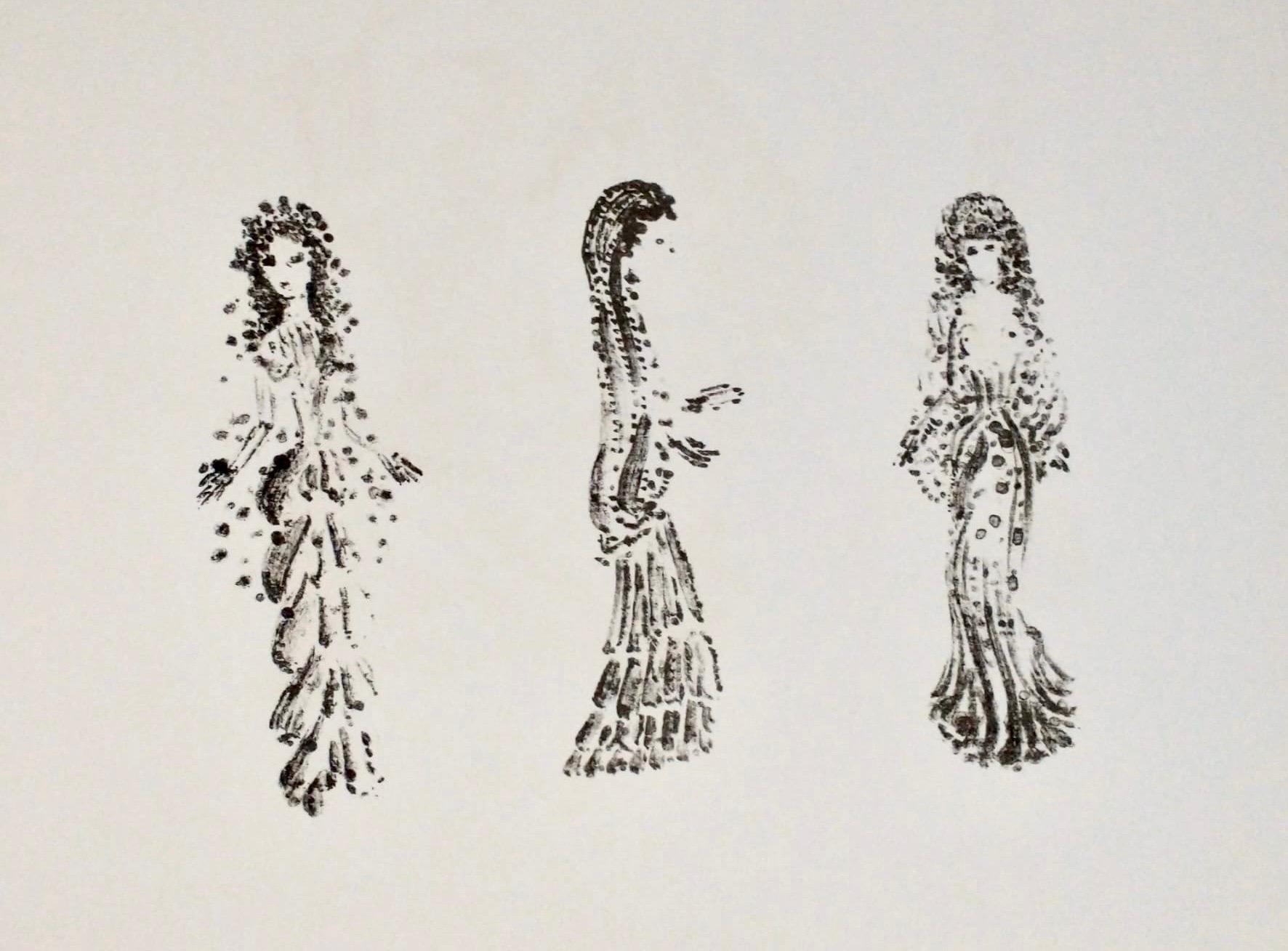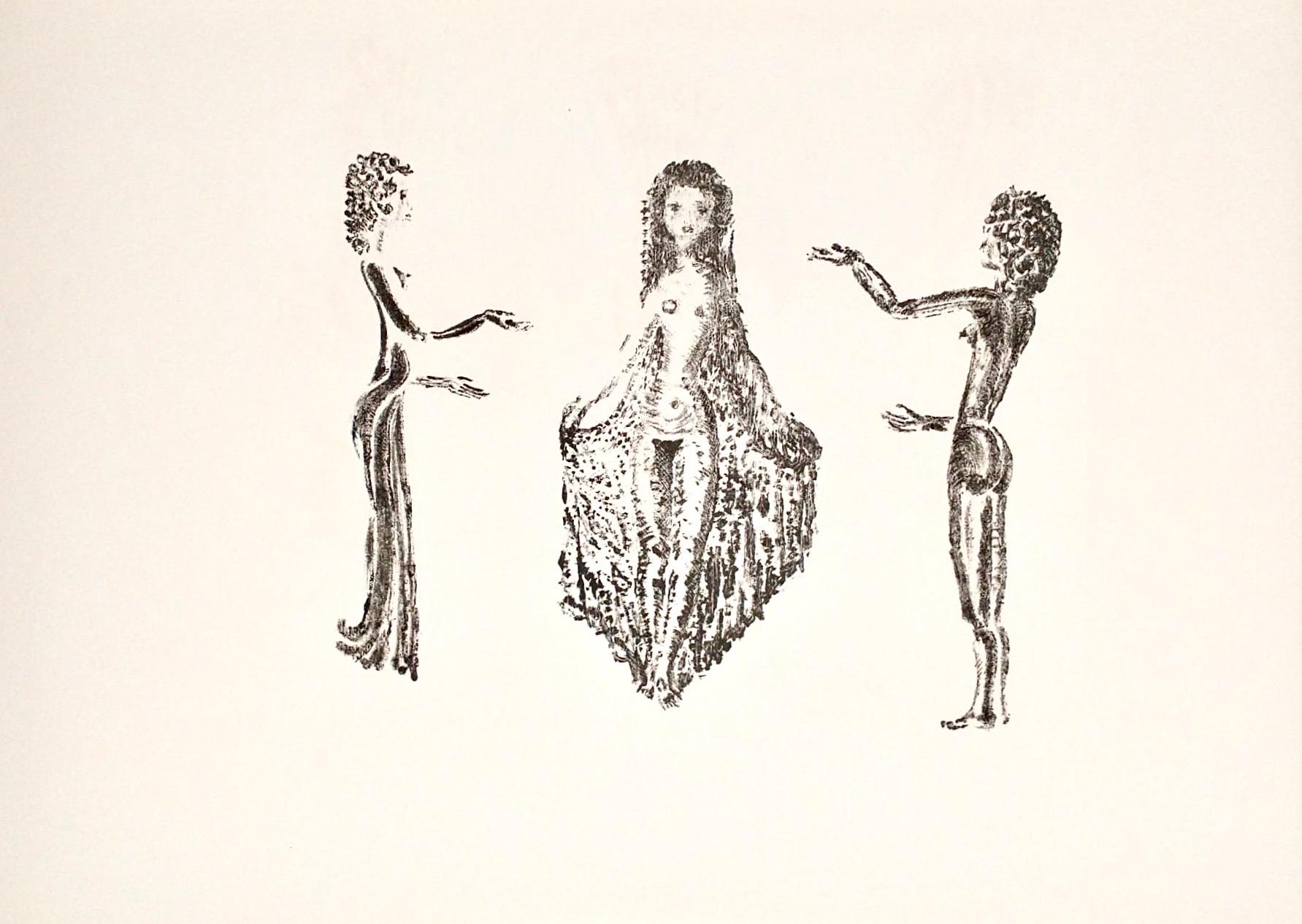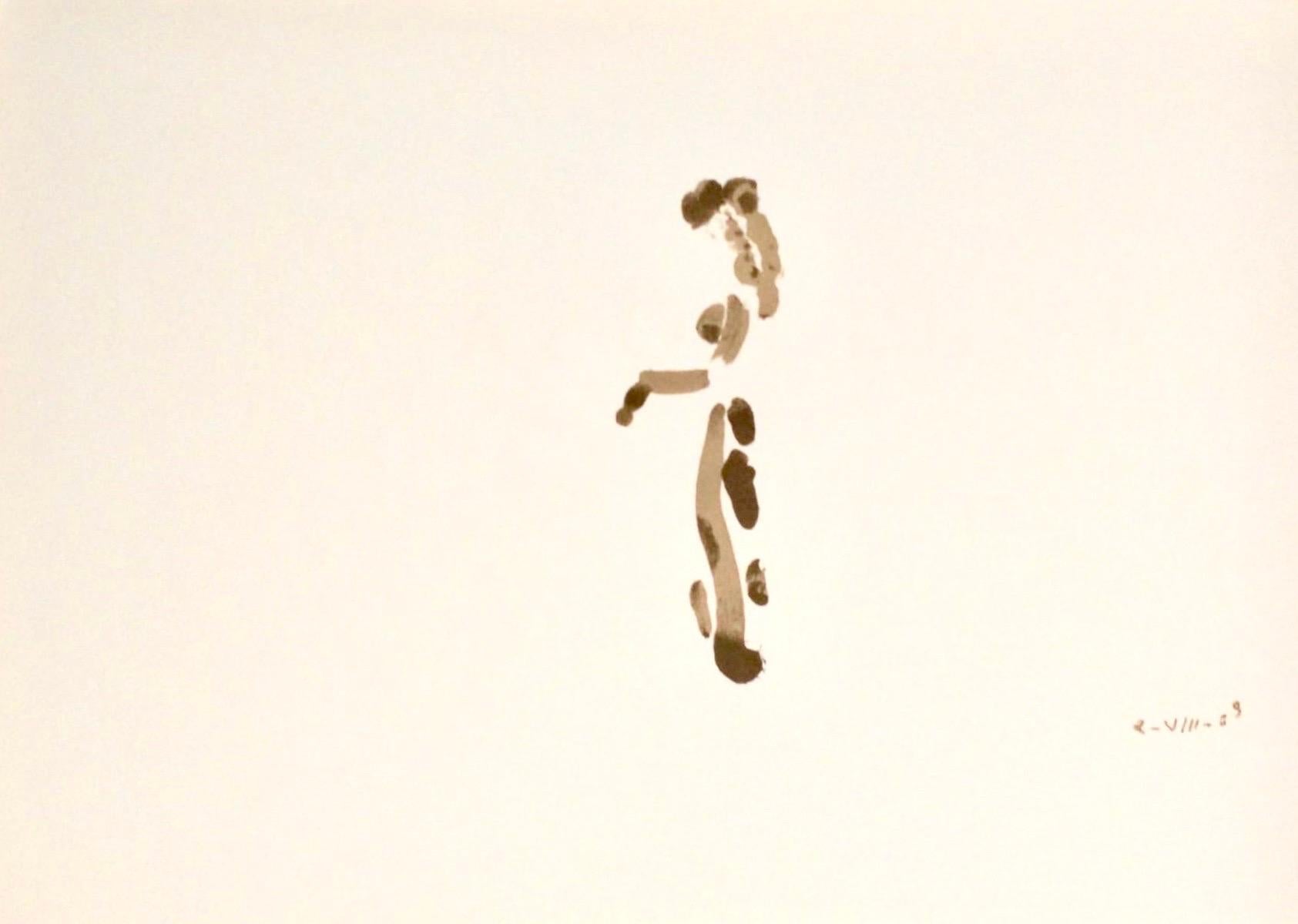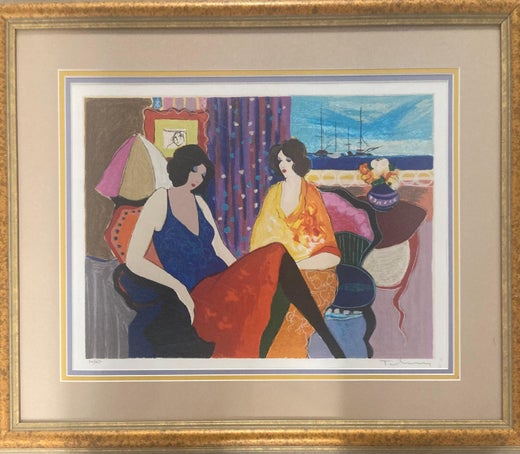Items Similar to Resting Nude Lithograph
Want more images or videos?
Request additional images or videos from the seller
1 of 10
Itzchak Tarkay Resting Nude Lithograph 1999
1999
About the Item
Resting Nude, limited edition color litho. 450/475, pencil signed
11"x14" framed 19.5x23.5x1
Itzchak Tarkay was born in 1935 in Subotica, on the Yugoslav-Hungarian border. In 1944, Tarkay and his family were sent to the Mauthausen Concentration Camp, until Allied liberation freed them a year later. In 1949, his family emigrated to Israel, living in a kibbutz for several years. Tarkay attended the Bezalel Academy of Art and Design from 1951 and graduated from the Avni Institute of Art and Design in 1956.
His art is influenced by French Impressionism, and Post-Impressionism, particularly Matisse and Toulouse-Lautrec. His work was exhibited at the International Art Expo in New York City in 1986 and 1987. He has been the subject of three books, published by Dr. Israel Perry. Perry Art Gallery And Park West Gallery, his dealer.
His art is focused on almost dream images of elegant women in classical scenes that draw you into an imaginary world. Itzchack Tarkay married Bruria Tarkay and had two sons, Adi and Itay Tarkay.
- Creator:Itzchak Tarkay (1935 - 2012, Israeli)
- Creation Year:1999
- Dimensions:Height: 19.5 in (49.53 cm)Width: 23.5 in (59.69 cm)Depth: 1 in (2.54 cm)
- Medium:
- Movement & Style:
- Period:
- Condition:
- Gallery Location:Lake Worth Beach, FL
- Reference Number:1stDibs: LU19221998163
Itzchak Tarkay
Itzchak Tarkay (1935 – June 3, 2012) was an Israeli artist. Tarkay was born in 1935 in Subotica, on the Yugoslav-Hungarian border. In 1944, Tarkay and his family were sent to the Mauthausen, a Nazi concentration camp, until Allied liberation freed them a year later. In 1949, his family emigrated to Israel, living in a Kibbutz for several years. Tarkay attended the Bezalel Academy of Art and Design from 1951, and graduated from the Avni Institue of Art and Design in 1956. Tarkay's art is influenced by French Impressionism and Post-Impressionism, particularly Matise and Toulouse-Lautrec. His work was exhibited at the International Art Expo in New York in 1986 and 1987. He has been the subject of three books, published by Dr. Israel Perry. Perry Art Gallery And Park West Gallery, his dealer. His art is focussed on almost dream images of elegant women in classical scenes which draw you into an imaginary world.
Few realize that Tarkay's early works were done by him personally to completion, but his later works were drawn by him and then colored in by helping artists on staff. This increased production, but that additional inventory reduced value of his total body of work. Today, the most important works by Tarkay are those that were done by his hand without assistance from others. Few dealers recognize this and many of Tarkay's pieces are not sorted out to distinguish his works from the works done by helper assistants to Tarkay. The value of "original" Tarkay works should increase in value, as Tarkay collectors begin to recognize the limited number of original works he made as opposed to the greater production which came later in Tarkay's career Tarkay's wife is Bruria Tarkay. They have two sons, Adi and Itay Tarkay. On June 3, 2012, Tarkay died. Tarkay was 77.
About the Seller
5.0
Gold Seller
These expertly vetted sellers are highly rated and consistently exceed customer expectations.
Established in 2004
1stDibs seller since 2015
296 sales on 1stDibs
Typical response time: 3 hours
- ShippingRetrieving quote...Ships From: Lake Worth Beach, FL
- Return PolicyA return for this item may be initiated within 3 days of delivery.
More From This SellerView All
- Portrait Of A Young Model Work On PaperBy Alexander RutschLocated in Lake Worth Beach, FLPortrait Of A Young Model Work On Paper Rutsch is always "scribbling and scrabbling." He is an artist of the purest breed—an artist who has no choice but to paint. He is a chosen traveler of the depths of existence; a man who follows a longing to explore his inner self and relate his findings with the energy and identity of the universe. The celebrated Austrian artist approaches painting and sculpture as he lives life—with the eyes of a child and the hand of a poet. Constantly in the quest for rhythms of form and vibrations of color, he catches those "sparks in the shadow" and evidences their fullest reality and beauty in his creations. Each of his paintings is a careful construction as it is a spontaneous act of love. While he might attribute certain artistic expressions to "coincidence," his inspiration comes from such diverse sources as: memories, dreams, sounds, numbers, telephone poles and drift wood. Rutsch has an affinity to vibrant colors, strong contours and rich brush strokes which are apparent in his oils, mixed media works and ink drawings. He has a sensitivity to the unusual, the discarded and a fondness for the ugly as well as the chaotic. These, he often transforms into poignant welded steel abstractions. Rutsch has an aversion to politics, citing dates and expounding upon honors achieved. There is no talk about 'profound symbolism' in his work and as Carlo McCormick writes in the introduction to Rutsch's monograph, "Meaning is not a seed that Rutsch plants, nurtures and then harvests. It is what grows wild in a volcanic swamp of fossilized, decaying and new-born fancies—as an afterthought and aftershock." Alexander Rutsch is not concerned with interpretations; he is, however, passionate about the process of making art and surrenders his entire being as an instrument to the act of creation. The geometry of his imagination overflows with figures, profiles and penetrating strong eyes—windows to a deeper place. Their vitality and sensuality pulsate through the "dreamscapes" of Rutsch's created worlds. At times romantic, yet always wild with energy, human forms and experiences are essential to the artist's vocabulary. The son of opera singers and a singer himself, Rutsch speaks of "the art of painting as the art of silence" and the job of the painter "to dedicate himself to the silence." He adds though, "that this silence is the greatest existing sound in the universe." One wonders why then, if painting is "the art of silence," that Rutsch's paintings scream with sound. Sometimes melancholy, sometimes sensual, sometimes dissonant and sometimes whispering, the rhythms are always rich in the celebration of life and our shared humanity. Painter, sculptor and poet, Rutsch's oeuvre over the past four decades is tremendous. Celebrated and collected especially in Vienna, Paris, Brussels and New York, he studied with renowned teachers like Boeckl and Dorowsky and collaborated with such geniuses as Salvador Dali. Having left Vienna in the fifties, Rutsch moved to Paris and took the city's art scene by storm. There, Picasso was so enthralled with a portrait Rutsch has done of him that, in a state of great excitement, he countersigned it. Biography Alexander Rutsch was born in Russia in 1916 but raised in Belgrade, Yugoslavia. After studying voice in Austria he became an opera singer like his parents, but after WWII, Rutsch's love for visual expression propelled him to change careers. He was a painter, sculptor, philosopher, musician, singer and poet. His life as a romantic is reflected in his work, as he sought to perfect his soul and humanity, "I paint my dreams," said Rutsch. "My dreams are color and life. They soar in my head like millions of symphonies. I can never stop building dreams." In 1952, after studying under Josef Dobrowsky, Josef Hoffmann and Herbert Boeckl at the Vienna Academy of Fine Arts, Alexander Rutsch received a scholarship to study in France. There he made contacts and began collaborations with his contemporaries, Picasso and Dali. Rutsch said of his experiences with Picasso, "Picasso played a short but important moment in my life in Paris that affected my entire artistic future. I learned from him that it is not important if art is not aesthetically finished. It can be raw, uncooked, rough. If an artist feels he has said it—it is not important to polish or finish it. Because of Picasso, I learned that if I don't feel the need to finish—I don't have to." In 1954 he exhibited his work at the Salon Artistique International de Saceux and won first prize for abstract painting, the first of may awards received during his prolific career. During the 13 years he lived in Paris, Rutsch exhibited in many prominent galleries there and throughout Europe. In 1958, The City of Paris awarded him the prestigious Arts, Science and Letters Silver Medal. In 1966, Jean Desvilles presented his prize winning film "Le Monde de Rutsch" at the Cannes Film Festival and the Venice Biennial. In 1968 Rutsch moved to Pelham, New York where he continued to work in his studio and exhibit in galleries and museums worldwide. Rutsch's work, as seen through his mastery of many art forms—sculpture, painting, print-making, and drawing, and a wide variety of other media has been described as "vibrating showers of lines, bold geometries, wounded anatomically rambling scrap-wood skeletons...Category
1980s Expressionist Mixed Media
MaterialsWatercolor, Charcoal, Oil Pastel
- Lovers Tribute to Chagall Murano Glass SculptureBy Walter FurlanLocated in Lake Worth Beach, FLAmanti (Lovers) Tribute To Chagall Signed, artist logo stamp, and title. Walter Furlan was born (1931-2018) in Chioggia, a small town near Venice. He started to work in a furnace c...Category
Early 2000s Expressionist Figurative Sculptures
MaterialsBlown Glass
- FightersBy Erwin GuillermoLocated in Lake Worth Beach, FLThe Fighters. Signed and dated lower left, also signed and titled on reverse. Erwin Guillermo was born in Guatemala City in 1951. He is one of the best representatives of Guatemalan Art...Category
1990s Expressionist Figurative Paintings
MaterialsCanvas, Oil
- Martenita Tribute to Picasso Murano Glass SculptureBy Walter FurlanLocated in Lake Worth Beach, FLMartenita Omaggio To Picasso, Signed, artist logo stamp, and title. Walter Furlan was born (1931-2018) in Chioggia, a small town near Venice. He started to work in a furnace calle...Category
Early 2000s Expressionist Figurative Sculptures
MaterialsGlass, Blown Glass
- Bouquet of FlowersBy Louis Marchand de RauxLocated in Lake Worth Beach, FLBouquet of Flowers Louis Marchand des Raux was born 1902-2000 in Touraine in the tiny village of Tourettes in France, where he grew up in such pov...Category
1940s Expressionist Still-life Paintings
MaterialsOil, Canvas
- Portrait Abstract ExpressionistBy Peter Robert KeilLocated in Lake Worth Beach, FLPortrait Abstract Expressionist. Mixed Media oil paint, collage, cotton cloth. Peter Robert Keil was born to an artist blacksmith father whom he lost very early in his childhood duri...Category
1970s Expressionist Figurative Paintings
MaterialsCotton Canvas, Mixed Media, Oil
You May Also Like
- Apeles Fenosa Spanish Sculptor Mourlot Lithograph Abstract Expressionist FiguresBy Apelles FenosaLocated in Surfside, FLThis is from a hand signed, limited edition (edition of 125) folio or full page lithographs some having a poem verso. The individual sheets are not signed or numbered. This listing ...Category
1970s Expressionist Figurative Prints
MaterialsLithograph
- Apeles Fenosa Spanish Sculptor Mourlot Lithograph Abstract Expressionist FiguresBy Apelles FenosaLocated in Surfside, FLThis is from a hand signed, limited edition (edition of 125) folio or full page lithographs some having a poem verso. The individual sheets are not signed or numbered. This listing ...Category
1970s Expressionist Figurative Prints
MaterialsLithograph
- Apeles Fenosa Spanish Sculptor Mourlot Lithograph Abstract Expressionist FiguresBy Apelles FenosaLocated in Surfside, FLThis is from a hand signed, limited edition (edition of 125) folio or full page lithographs some having a poem verso. The individual sheets are not signed or numbered. This listing ...Category
1970s Expressionist Figurative Prints
MaterialsLithograph
- Apeles Fenosa Spanish Sculptor Mourlot Lithograph Abstract Expressionist FiguresBy Apelles FenosaLocated in Surfside, FLThis is from a hand signed, limited edition (edition of 125) folio or full page lithographs with a poem verso. The individual sheets are not signed or numbered. This listing is just...Category
1970s Expressionist Figurative Prints
MaterialsLithograph
- Apeles Fenosa Spanish Sculptor Mourlot Lithograph Abstract Expressionist FiguresBy Apelles FenosaLocated in Surfside, FLThis is from a hand signed, limited edition (edition of 125) folio or full page lithographs some having a poem verso. The individual sheets are not signed or numbered. This listing ...Category
1970s Expressionist Figurative Prints
MaterialsLithograph
- Apeles Fenosa Spanish Sculptor Mourlot Lithograph Abstract Expressionist FiguresBy Apelles FenosaLocated in Surfside, FLThis is from a hand signed, limited edition (edition of 125) folio or full page lithographs some having a poem verso. The individual sheets are not signed or numbered. This listing is just for the one sheet, not for the cover sheet or the signed sheet. This was printed at Mourlot in Paris, France, on velin D'Arches paper. Apel les Fenosa i Florensa (1899 - 1989) lived in Spain. Apelles Fenosa is known for Expressionist Sculpture. Artist's alternative names: Apel·les Fenosa, Apelles Fenosa Spanish Sculptor Fenosa was born in Barcelona, Spain in 1899 and as a young man worked in the studio of sculptor Enrique Casanovas where he came into contact with the ideas and adherents of the Modernist Movement and its influence in Barcelona, Paris and other European cities. In 1917 he founded together with Joan Rebull, Josep Granyer and Josep Viladomat the group The Evolutionists. He arrived in Paris in 1921. There he quickly gravitated into the Parisian avant garde artist community and became friends with Pablo Picasso, who became an early patron of his work, buying a significant number of his sculptures, and with the sculptor Max Jacob. By 1924 Fenosa was exhibiting in Paris and in his native city of Barcelona. Max Jacob wrote the preface to the catalogs of Fenosa's first Paris exhibition, and his show at the Zborowski gallery in 1928. In 1931 Fenosa was in Catalonia when the Second Spanish Republic was declared. There he remained in order to work with the anarchist movement and participate in the Republican ranks during the Spanish Civil War. He participated in the Venice Biennale in 1936 and with the coming to power of the Franco Fascist regime left Spain once again to settle in Paris. In 1942, he met the painter and poet, Paul Eluard, who became a close friend. In 1944, the Comite de Liberation du Limousin (Organization for the Liberation of the Limousin) commissions a sculpture to commemorate the Nazi killings of Oradour-sur-Glane. He creates the "Monument aux Martyrs d'Oradour-sur-Glane" (Monument to the Martyrs of Oradour) presently in Limoges. From 1946 Fenosa exhibited individually or collectively in Paris, London, Barcelona, Madrid, Prague, New York, Tokyo, Rabat, Osaka, Casablanca, Carrara. His personal exhibition catalogs are prefaced by the most famous writers and poets of his time, including Paul Eluard, Jean Cocteau, Jules Supervielle, Josep Carner, Alexandre Cirici-Pellicer, Francis Ponge, Pablo Neruda, Michel Cournot, Roger Caillois, Salvador Espriu. He was part of a generation of Spanish and Catalan artists that included Jose Amat Pages, Ramon Pichot, Alfredo Opisso Cardona, Ramon Aguilar More, Juan Cardona Llados, Josep Miquel Serrano, Ignacio Zuloaga Y Zabaleta, Andre Beaudin, Francisco Domingo Y Segura, Jose Armet Y Portanel, Jose Ventosa Domenech, Antonio Vila Arrufat, Montserrat Gudiol...Category
1970s Expressionist Figurative Prints
MaterialsLithograph






